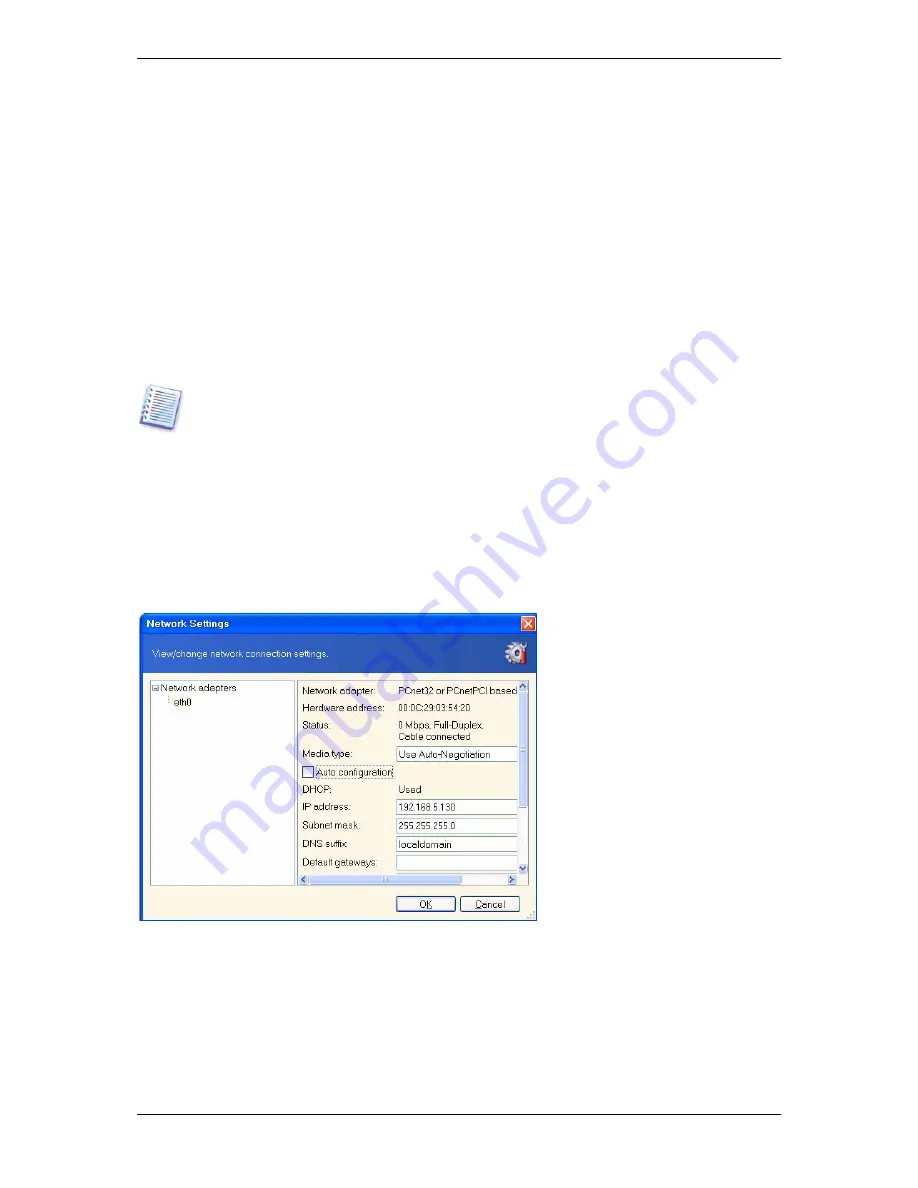
Chapter 7. Restoring the backup data
7.1 Restore under Windows or boot from CD?
As mentioned above (see
2.4.1. Running Acronis True Image Worksta ion (local version)
),
Acronis True Image Workstation can be run in several ways. We recommend that you first
try to restore data running Acronis True Image Workstation under Windows, because this
method provides more functionality. Boot from the bootable media or use the Startup
Recovery Manager (see
3.4 Acronis Startup Recovery Manager)
only if Windows does not
load.
t
The boot CD from which you loaded the program does not keep you from using other CDs
with backups. Acronis True Image Workstation is loaded entirely into RAM, so you can
remove the bootable CD to insert the archive disk.
Be careful! Disk letters in standalone Acronis True Image Workstation might sometimes
differ from the way Windows identifies drives. For example, the D: drive identified in the
standalone Acronis True Image Workstation might correspond to the E: drive in Windows.
7.1.1 Network settings in rescue mode
When booted from removable media, RIS server or by Startup Recovery Manager, Acronis
True Image Workstation may not detect the network. Such might be the case if there is no
DHCP server in your network or your computer address was not identified automatically for
some reason.
To enable connection, specify network settings manually in the window, available at
Tools -
> Options -> Network adapters.
7.2 Restoring files and folders from file archives
Here we describe how to restore file/folders from a file backup archive. You can restore the
desired files/folders from a disk/partition image as well. To do so, mount the image (see
Chapter 12. Mounting an image as a virtual drive
) or start the image restoration and select
Restore specified files or folders
(see
7.3 Restoring disks/partitions or files from
images
).
Copyright © Acronis, Inc., 2000-2006 55















































